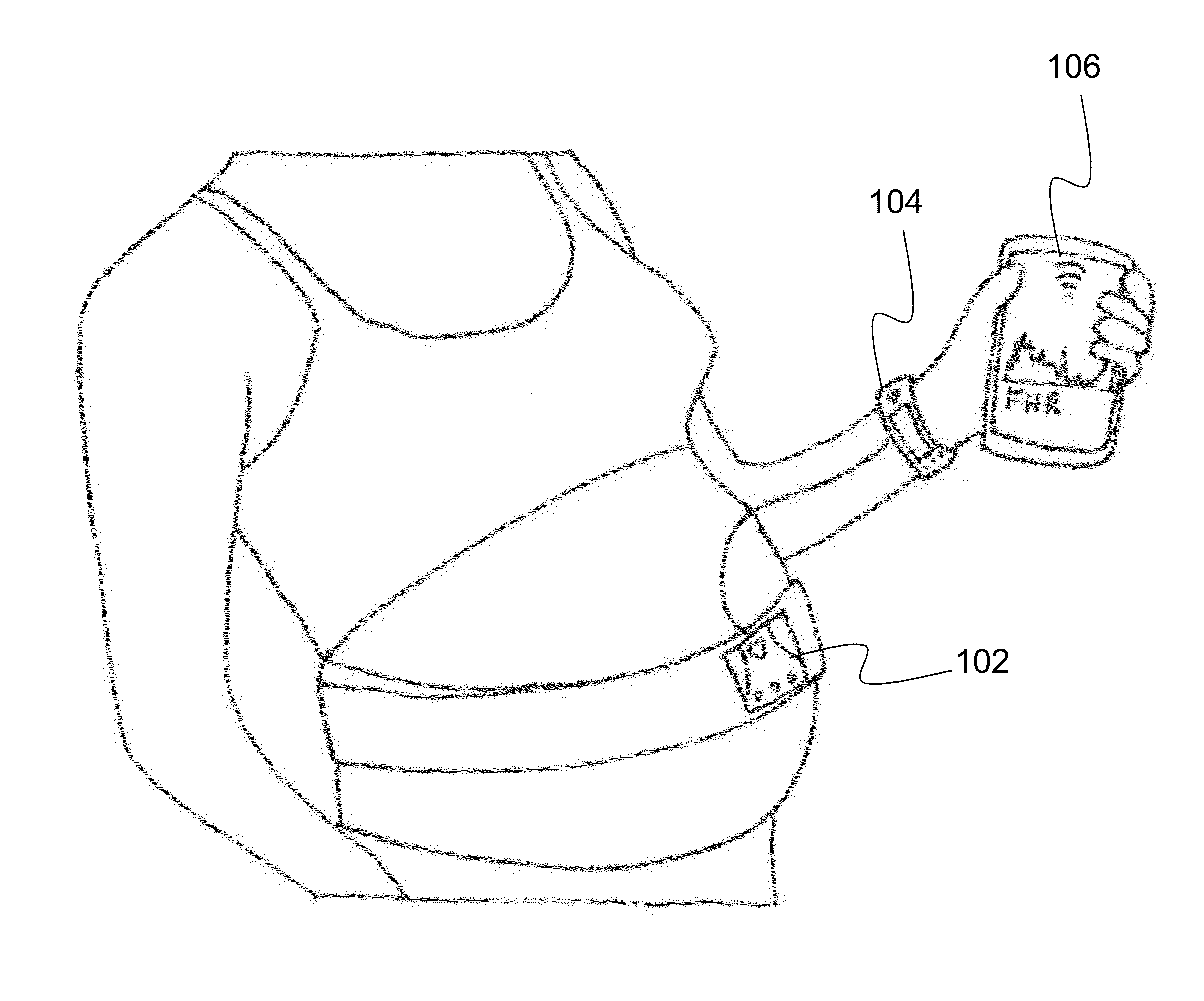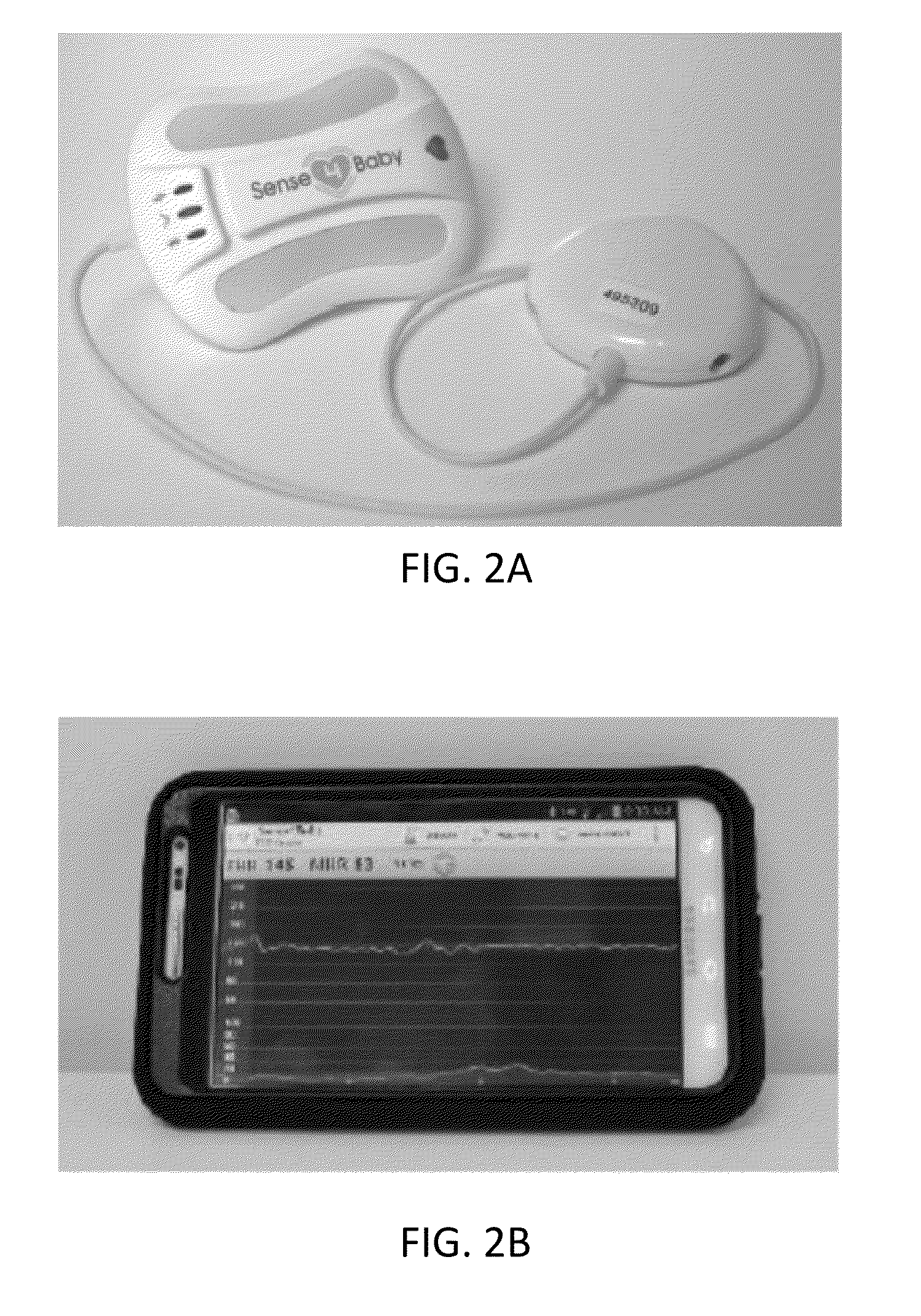Systems, methods and devices for remote fetal and maternal health monitoring
a technology for remote fetal and maternal health monitoring, applied in the field of remote health monitoring, can solve the problems of limiting the patient's mobility, limiting the access to fetal monitoring, and expensive traditional fetal monitoring systems
- Summary
- Abstract
- Description
- Claims
- Application Information
AI Technical Summary
Benefits of technology
Problems solved by technology
Method used
Image
Examples
Embodiment Construction
[0037]Certain embodiments disclosed herein provide for systems and methods for remote fetal and maternal monitoring using wearable sensing devices which are provided with power and signal processing through connections with a central control unit. The central control unit wirelessly transmits the signal data to a gateway device which can then analyze, display and further transmit the data to a remote location for analysis. The gateway device is configured with a display and other interactive functionality to display instructions to a user for performing tests with the sensing devices or interacting with a remote user during a virtual office visit. The remote fetal and maternal monitoring systems and methods therefore provide for frequent, convenient remote monitoring of maternal and fetal health.
[0038]The central control unit is configured to provide proprietary connections with a plurality of different sensing devices in order to provide power to the sensing devices and receive the...
PUM
 Login to View More
Login to View More Abstract
Description
Claims
Application Information
 Login to View More
Login to View More - R&D
- Intellectual Property
- Life Sciences
- Materials
- Tech Scout
- Unparalleled Data Quality
- Higher Quality Content
- 60% Fewer Hallucinations
Browse by: Latest US Patents, China's latest patents, Technical Efficacy Thesaurus, Application Domain, Technology Topic, Popular Technical Reports.
© 2025 PatSnap. All rights reserved.Legal|Privacy policy|Modern Slavery Act Transparency Statement|Sitemap|About US| Contact US: help@patsnap.com



